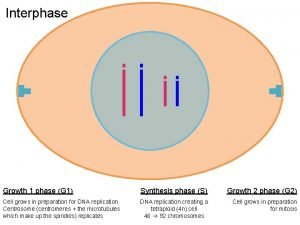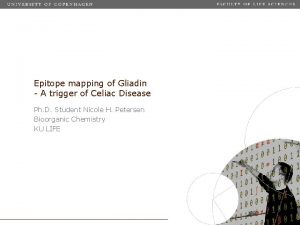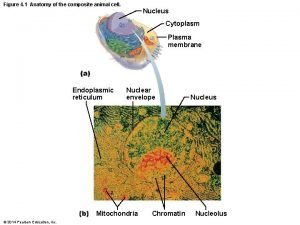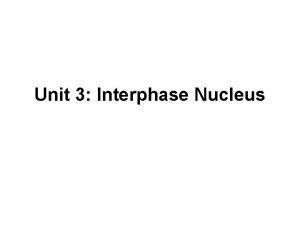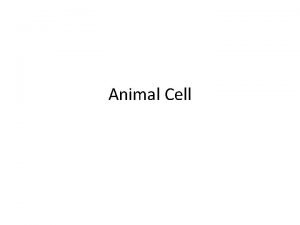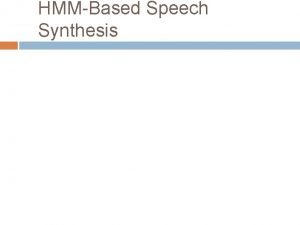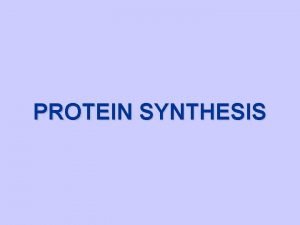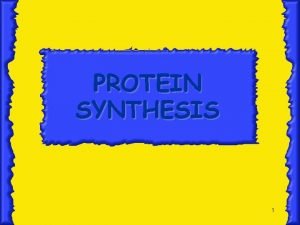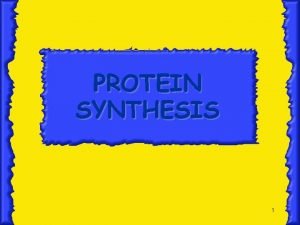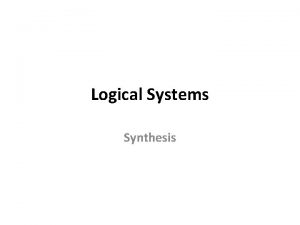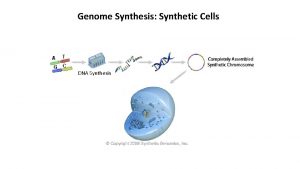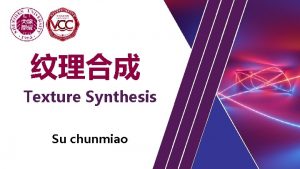Interphase Growth 1 phase G 1 Synthesis phase













- Slides: 13

Interphase Growth 1 phase (G 1) Synthesis phase (S) Growth 2 phase (G 2) Cell grows in preparation for DNA replication Centrosome (centromeres + the microtubules which make up the spindles) replicates DNA replication creating a tetraploid (4 n) cell 46 92 chromosomes Cell grows in preparation for mitosis

Prophase I Chromatin condenses into chromosomes – two sister chromatids held together by the centromere Meiosis I Nuclear membrane fragments

Prophase I Chromatin condenses into chromosomes – two sister chromatids held together by the centromere Meiosis I Nuclear membrane fragments Crossing over occurs creating recombinant chromosomes

Prophase I Chromatin condenses into chromosomes – two sister chromatids held together by the centromere Meiosis I Nuclear membrane fragments Crossing over occurs creating recombinant chromosomes Spindle attach to centromere

Metaphase I Independent assortment – Chromosomes randomly align along the equator Meiosis I

Anaphase I Meiosis I Homologous chromosomes separate to give each daughter cell equal DNA

Telophase I The nucleoli reappear Meiosis I The cell elongates and forms cleavage (cytokinesis)

Telophase I The nucleoli reappear Meiosis I The cell elongates and forms cleavage (cytokinesis) 2 non-identical diploid (2 n) daughter cells form 92 46 chromosomes

Prophase II Nuclear membrane fragments Meiosis II Spindle attach to centromere

Metaphase II Meiosis II Chromosomes align along the equator

Anaphase II Meiosis II Chromatids separate to give each daughter cell equal DNA

Telophase II The nucleoli reappear Meiosis II The cell elongates and forms cleavage (cytokinesis)

Telophase II The nucleoli reappear Meiosis II The cell elongates and forms cleavage (cytokinesis) 4 non-identical haploid (n) daughter cells (gametes) form 46 23 chromosomes
 Growth 1 phase
Growth 1 phase Solid phase peptide synthesis
Solid phase peptide synthesis Forward reference table(frt) is arranged like -
Forward reference table(frt) is arranged like - Neoclassical growth theory vs. endogenous growth theory
Neoclassical growth theory vs. endogenous growth theory Primary growth and secondary growth in plants
Primary growth and secondary growth in plants Difference between organic and inorganic growth
Difference between organic and inorganic growth Relative growth rates
Relative growth rates Primary growth and secondary growth in plants
Primary growth and secondary growth in plants Eudicot
Eudicot Geometric vs exponential growth
Geometric vs exponential growth Carothers equation
Carothers equation Pmat cytokinesis
Pmat cytokinesis Interphase cell
Interphase cell Interphase cell
Interphase cell
